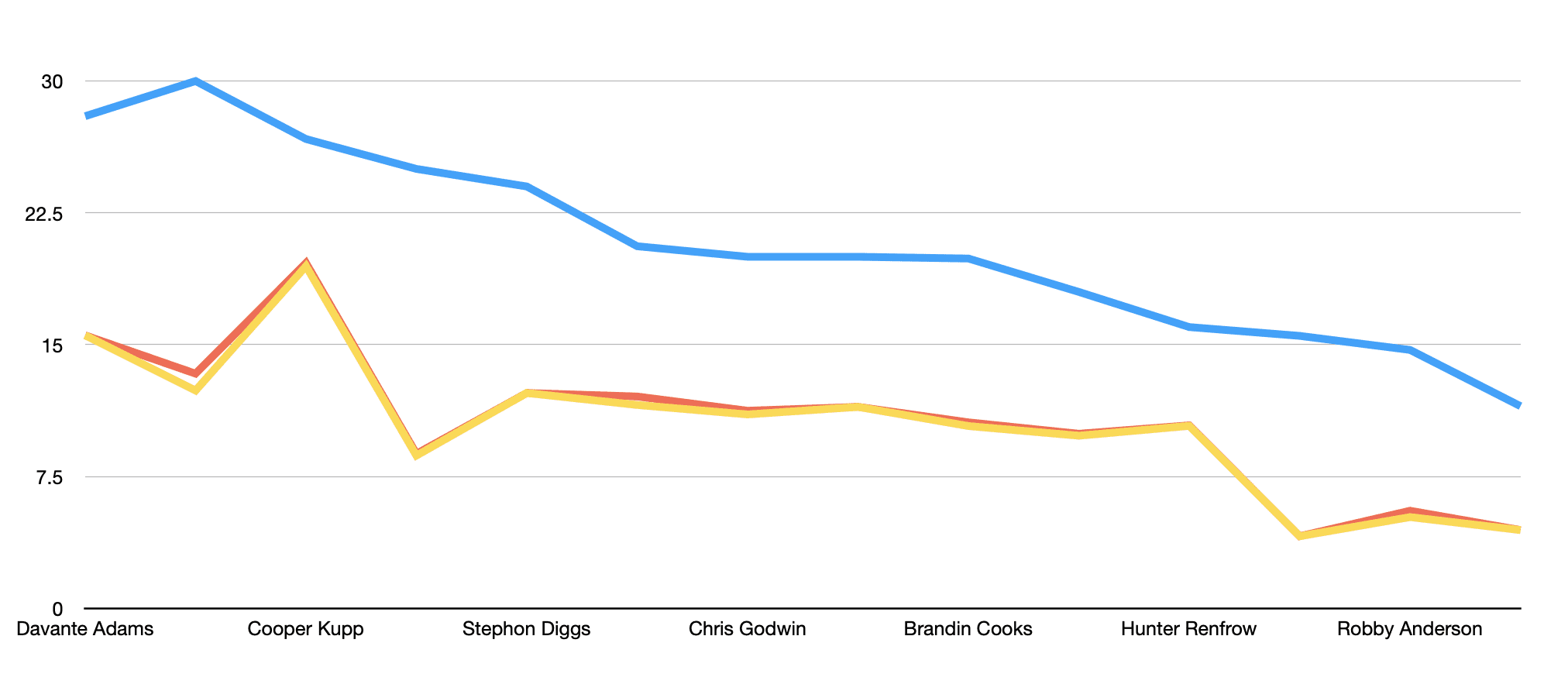What Do Kupp, Renfrow Contracts Tell Us about Diontae Johnson’s Value?

Los Angles Rams wide receiver Cooper Kupp and Las Vegas Raiders wide receiver Hunter Renfrow each signed contract extensions this week, and those contracts can help us predict what an extension for Steelers wide receiver Diontae Johnson would look like.
Kupp signed a new five-year, $110 million deal with the Rams. Renfrow got a two-year, $32 million deal with the Raiders.
In total, 15 wide receivers have either signed a free agent contract or a contract extension this offseason worth more than an average annual value of $10 million per season, according to contract data from spotrac.com.
When adding the Kupp and Renfrow deals to the older ones, what does it tell us about what the NFL values in wide receivers?
For me, one of the most telling stats for looking at wide receiver production is yards per target. It includes hard to quantify things like catch rate and ability to get open with more traditional stats like yards and catches. But it does not seem that those writing the checks at the NFL level share my affinity for that metric. Here is a chart of every new wide receiver contract by average annual value (blue) superimposed with that player’s 2021 yards per target (green) and traditional yards per catch (grey).

As you can see, there is basically no correlation. Even if we accept that Kupp gave the Rams a good deal, the second-best receiver by yards per touch Christian Kirk got the 10th-biggest contract, while second-highest paid Tyreek Hill was under eight yards per target. Perhaps there is simply a downward limit on rate performance that would preclude a receiver from getting an eight-figure contract. Or the league just doesn’t care that much about those numbers.
What about more old-fashioned stats? Let’s just count receiving yards. Now we appear to be on to something. Now we have the same salary data (blue) superimposed over total receiving yards (gold) and yards from scrimmage (red), in an attempt to account for the rushing contributions of players like Hill.

Now the correlation becomes quite strong. It seems that NFL teams do care a good bit about a player’s total productivity and that it is a major factor in identifying their value.
So if that’s the case, what does it mean for Johnson? Well first of all, it’s pretty good news for him.
The one knock against him would be his propensity for some ill-timed drops, but just looking at total yards won’t hurt him in that regard. He also compares favorably in total productivity to some of the players on this list that have been very well paid.
Johnson had 1,214 scrimmage yards in 2021, right between D.J. Moore (1,205) and Stephon Diggs (1,225) on the list. Diggs made $24 million per year. Moore got $20.6 million per year.
Spotrac https://twitter.com/spotrac/status/1511679690121125891″>estimated
in April that Johnson will get a four-year, $88 million contract, or almost exactly in the middle of that range. So it doesn’t seem that the newest contracts handed out to Kupp and Renfrow have changed much in the market, but the additional data points do help us figure out what matters to NFL teams and what is being valued by the market.
Now it just remains to be the seen if the Steelers share the market’s assessment of Johnson’s worth. If they do, it might be pretty easy to get the fourth-year receiver locked up to a long-term contract before the Steelers’ self imposed deadline of the start of the regular season.
But if they don’t, Johnson may want to wait until he hits free agency next March to get the value that he believes he’s earned. Of course, if he takes that route, he’ll have to perform at the same high level in 2022 that he did in 2021, so it will be a bet on himself.
